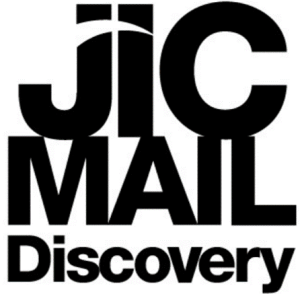Did you know that people are a whopping 84% more likely to open a letter if it’s personalised (InfoTrends)? It’s a compelling stat – and one that should help to convince you that in today’s hyper-competitive market, personalisation really is key.
With disposable income a distant dream for many, people are (understandably) being far more cautious when deciding what to spend their money on these days – making the job of marketers up and down the country harder than ever. But, as we reported on in our recent marketing trends predictions for 2024, personalisation is one of the stand-out ways to increase customer engagement, and boost those all-important sales.
Let’s dig a little deeper.
The Psychology of Personalisation
People love to see their name in print! Whether you’re in B2B or B2C, you can boost your marketing game with surprisingly little effort (so long as you’re working with an expert in personalisation).
In How to Win Friends and Influence People, author Dale Carnegie astutely observes that a person’s name is the most important sound to them. He realised that using a person’s name is crucial to winning them over. This plays to your brain’s system of information filtering, known as the reticular activating system (RAS). A common example is known as ‘the cocktail party effect’, described by Erik Daveny:
“If you’re at a party with dozens of people chatting, you’ll find that you can easily tune out of those conversations. They’re background noise. But, as soon as someone says something that is of particular interest to you, you will magically tune into that specific conversation.”
Your brain will recognise the interesting information while filtering the clutter. Good personalisation works on this premise. But where does it all come from?
One study from the University of Texas found that our desire for personalised marketing originates from two key factors: information overload, and the desire for perceived control around media consumption. People may not actually have any control when it comes to the material that’s marketed to them, but when comms are personalised, it at least affords a perception of control.
The Role of AI in Personalisation
From Netflix recommendations for content you’ll binge, to Spotify recommendations for music you’ll love, digitisation has made personalised marketing far more, well, personal.
Gone are the days of simply starting an email with a name drop: advances in tech – namely AI – mean that modern marketers can dig much deeper into customer data to pinpoint people’s pain points and understand how their brand can save the day! But if you’re going to do it, you need to do it right – and not every marketer is finding the ‘do’ all that straightforward.
Any marketer worth their salt understands that incorporating personalisation tactics into their marketing efforts will pay dividends. In fact, around half of surveyed marketers from various countries claim to personalise the customer experience in an effort to boost customer retention, and improve CX in general. Despite this, almost half admit to lacking access to the data required for personalisation improvement.
AI technology – and specifically ML (Machine Learning) – can help companies to personalise communications at scale, utilise real-time data to optimise marketing campaigns at speed, and even predict future consumer behaviour. But it is wise to exercise caution.
The Importance of Quality Data for Personalised Marketing
Personalisation relies on real-time data and insights to deliver high-quality, personalised messages to consumers – and it’s something that people are increasingly responding to. In fact, one study found that 43% of online shoppers were willing to share their personal data for the sake of tailored marketing. And with many internet users happy to exchange their email addresses for customised offers, the possibilities appear to be endless. But only if you’re dealing with quality data.
When it comes to personalised marketing, data profiling and cleansing are crucial.
- Customer Profiling – Collecting and analysing data on your customers’ behaviours, preferences, demographics, and other key information – allows you to create an incredibly useful profile of your target customers. You can then use this information to develop personalised marketing campaigns that appeal to your ideal consumer. However, actionable results rely on accurate data.
- Data Cleansing – If your data isn’t cleaned – that means removing old email addresses, misspelled names, duplicate contacts, and the like – your dataset is likely to be inaccurate and incomplete. This can render data analysis more challenging and less accurate, and make any decisions based on that data less effective.
Robust data management will ensure that your data is trustworthy – meaning that the insights you pull from that data will be more accurate and generate better outcomes.
Supercharge Your Direct Mail
Personalisation is all about reaching the right person, in the right place, at the right time. If you want to offer your customers a seamless experience, your offers need to be personal, timely and relevant.
Consumers are increasingly savvy and understand that companies have large amounts of data about their purchasing habits. So, we expect companies to use that data in the right way: to build trust and make their marketing more relevant.
Ready to Offer a Personalised Customer Experience?
KPM is here to advise you on which types of personalised direct mail you can capitalise on. Plus, we can support your data cleansing, customer profiling and help with the complex data programming you need to meet your goals for 2024 – and beyond.
Book a Free Data Health Check
Discover how effective your mailing data is with our free report and recommendations. You’ll gain insights into the quality of your data and see how much of your data is healthy. Plus, we’ll include recommendations for improvement and next steps.
To book your Free Data Health Check please fill in the form: Contact Us
Read more >
How Personalisation Can Supercharge Your Direct Mail – Read this guide to get started with personalisation
Your Guide to Triggered Mail and How to Use It – Learn more about triggered mail and its benefits to your business





















